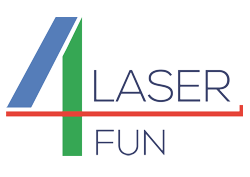Results of the work in the Laser4Fun project has been published as:
Fotis Fraggelakis, Girolamo Mincuzzi, John Lopez, Inka Manek-Hönninger, and Rainer Kling. Texturing metal surface with MHz ultra-short laser pulses. Optics Express 25(15), pp. 18131-18139, 2017
Abstract
Exploitation of surface texturing by ultra-short pulse laser (UPL) technology for commercial purposes requires the undertaking of several issues including a reliable and robust set-up compatible with large area and high throughput production. A technological strategy to rise to this challenge could be the use of polygon scanner which can deflect a laser beam with unprecedented speed (up to some hundreds of m/s) over an optical field of some tens of cm, jointly with high average power UPL delivering pulse energies of few tens of micro joule and repetition rates in the range of MHz. Nevertheless, unwanted thermal effects are expected to arise, when utilising average power as high as several tens of Watts, compromising the surface texturing morphology. Here a study is reported on the surface texturing of stainless steel carried out utilising an industrial UPL emitting both in the near infrared (λ = 1030 nm) and visible (λ = 515 nm) with high average power (up to 20 W) and operating at high repetition rate (1 MHz). The impact of the fundamental process parameters like single pulse fluence, beam scan speed, number of successive scans and energy dose has been studied. The evolution of the surface morphology has been investigated using scanning electron microscopy (SEM) analysis. We believe our results will contribute to an in deep understanding of the UPL laser texturing with high power, as preliminary step to increase in the next future surface texturing by UPL technological readiness.
